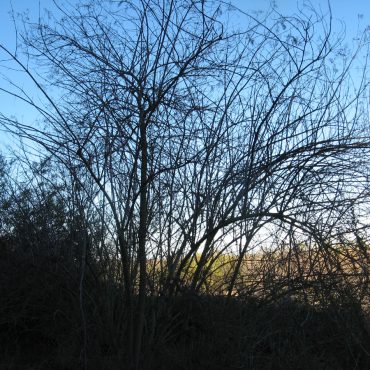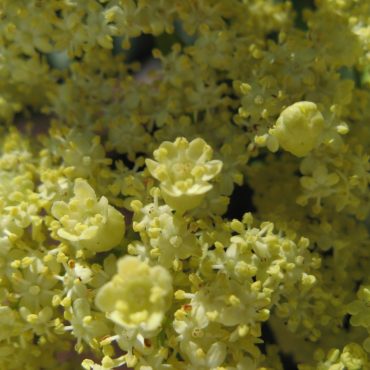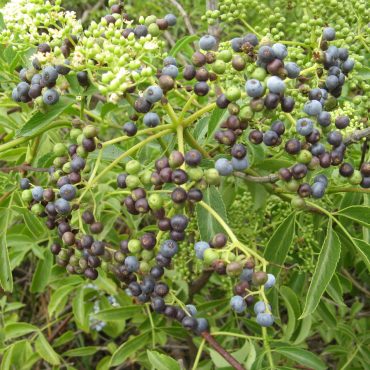Mexican elderberry (or blue elderberry, Sambucus nigra) is an open green shrub or small tree that grows throughout the Reserve wherever a little extra fresh water is available. Even though roots, leaves, stems and green berries are toxic, elderberry was an important food and medicinal plant for Native Americans. Berries were eaten fresh or dried for use later in the season. The flowers were brewed into a medicinal broth. Early settlers made elderberry jams and wines.
Mexican Elderberry
Sambucus nigra
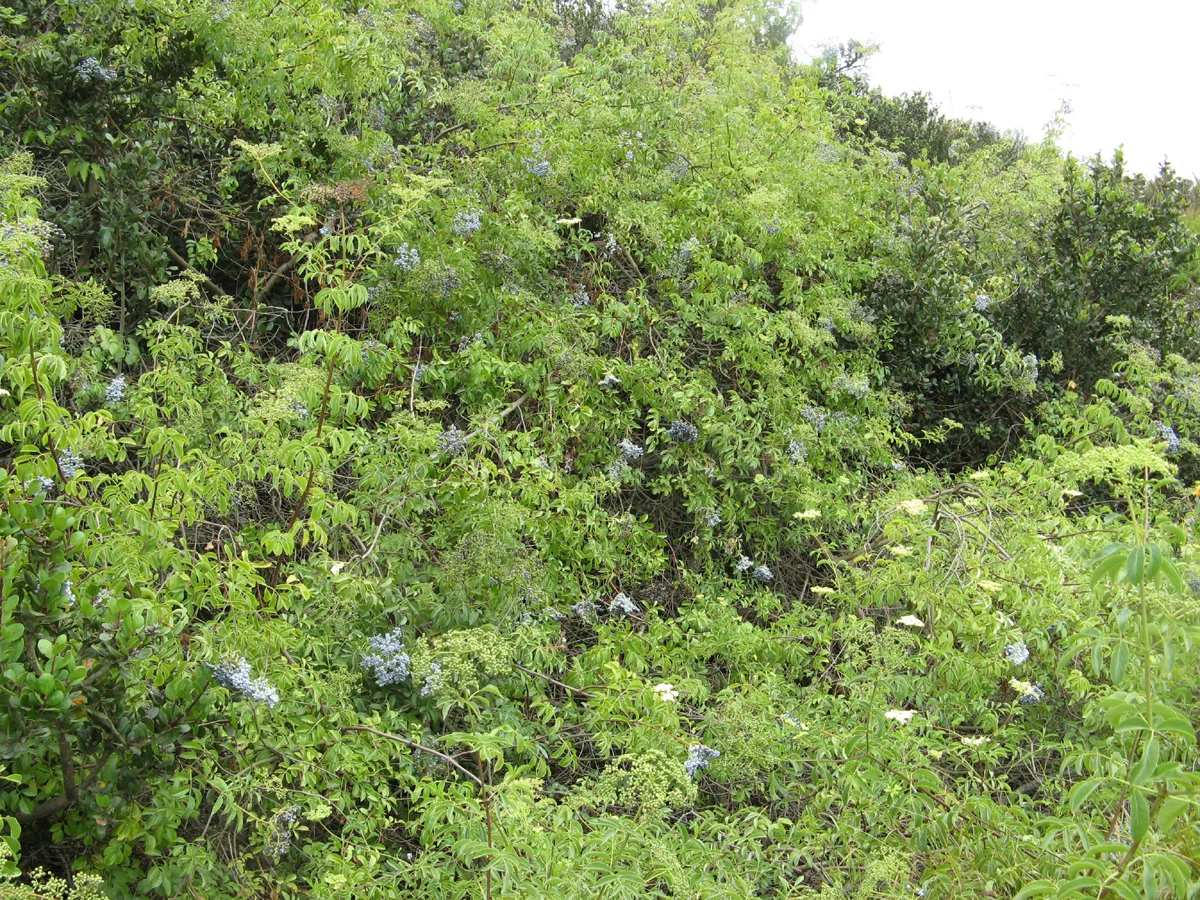
Other Common Names:
blue elderberry, elderberry
Description 2,4,11,24,59
Mexican elderberry is a large shrub or small tree, usually less than 20 feet tall, with an equal spread. It often has multiple trunks, arching outward.
Leaves are glossy green, composed of 3-9 elliptical leaflets arranged bilaterally. Leaflets have fine teeth along the margins. Leaves are winter deciduous, although in our climate, leaves may be retained in winter or they may be shed earlier in response to dry summer conditions.
Large, flat-topped clusters of tiny cream-colored flowers appear at the branch ends, mostly in March-September.1 Individual flowers are bisexual and less than ¼ inch (5 mm) across. They are radially symmetrical, with five petals (occasionally 4 or 6) which alternate with the stamens. Flower clusters may be up to 6 or more inches (15 cm) across.
Fruits resemble blue-black berries (technically they are drupes) hanging in pendulous clusters. They are covered with a waxy white powder that makes them appear pale blue, but the degree of waxiness, and hence the shade of blue, is variable. There are 3-5 seeds in each fruit which ripens in the summer.
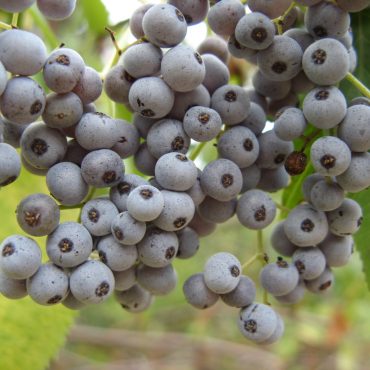
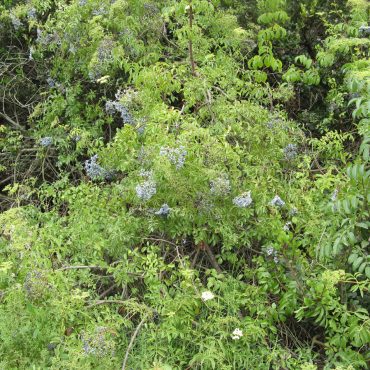
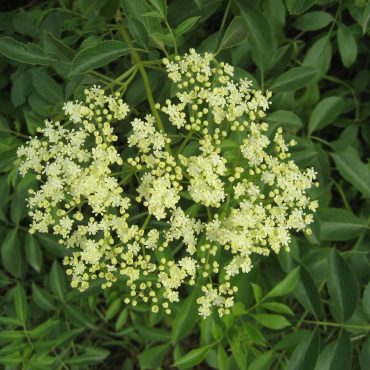
Distribution
The species Sambucus nigra is distributed throughout the Northern Hemisphere. Our subspecies, Mexican elderberry, ssp. caerulea, occurs throughout the western US and Canada.67 In California, it is a frequent component of many plant associations59 from the mountains to the coast,8 especially in drainages and other damp areas.
In the Reserve, Mexican elderberry is often found at the outer edge of riparian woodland near willows and mule fat, where fresh water is a bit more plentiful. Just east of the Santa Inez trailhead, several large elderberries occur along the trail at the base of the bluff, possibly receiving water from the lawns above.
Learn more about plant vegetation types here
Classification 2,143
Mexican elderberry is a dicot perennial in the family Adoxaceae (the muskroot or family) which is characterized by the structure of the flower and fruit.11 The other genus in this family is Viburnum,59 species of which are common ornamental plants. Both genera were formerly classified in the honeysuckle family (Caprifoliaceae).
Our elderberry is the sole member of this family in the Reserve. It is a subspecies, Sambucus nigra ssp. caerulea,48 which was previously thought to be a separate species, S. mexicanus.
Alternate Scientific Names:
Sambucus mexicana
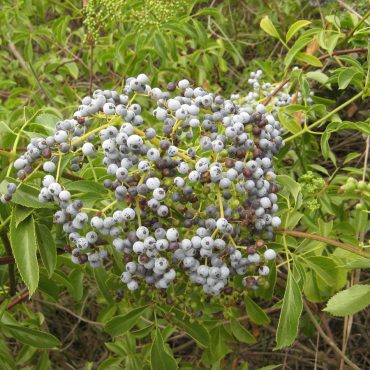
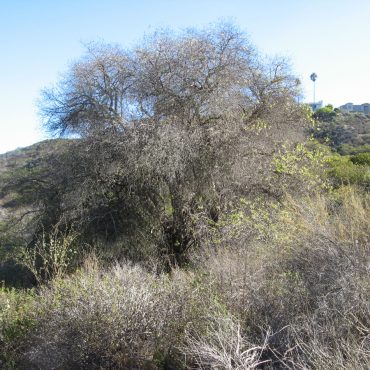
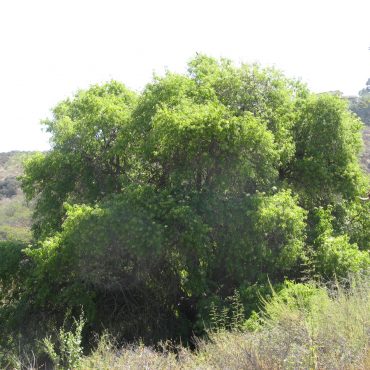
Ecology
In spite of its green and “tender” appearance, Mexican elderberry is relatively fire tolerant. It can resprout from the root crown. Seeds are long-lived (at least 16 years) with a hard seed coat. Fire weakens the seed coat and stimulates germination in long-buried seeds.5
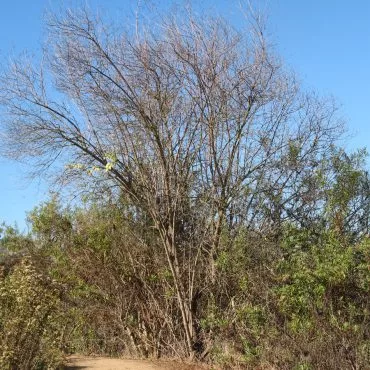
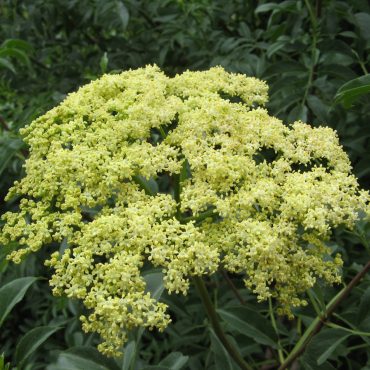
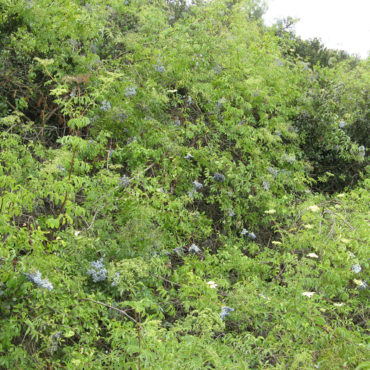
Human Uses
Native Americans ate the fruit, made a soothing tea from dried blossoms, and spread it externally for sprains, sore joints or itches.18,23 Shoots and branches were used for flutes by pushing out the pith with a straightened toyon stick15,18 and hollowed twigs were partially split to make clapper sticks.15 Wood was used for bows.17 Berries can be made into pies and jams.
Twigs and berries produce a black dye that was used by some Native Americans for basketry. Berries alone produce a purple dye.34
Elderberry flowers are one of the main ingredients in the Italian liquor Sambuca, along with anise flavoring and various herbs.41
NOTE: All parts of the plant, except flowers and ripe fruits, contain cyanic glycoside,11 which can cause nausea, vomiting, and diarrhea. Although no cases of death are known, at least one case of hospitalization has been reported.56,68
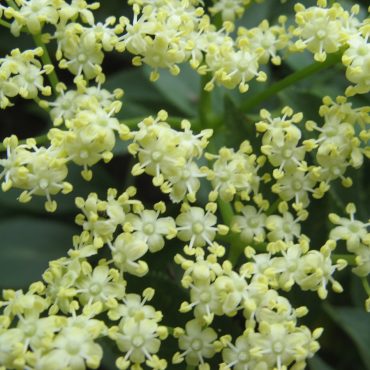
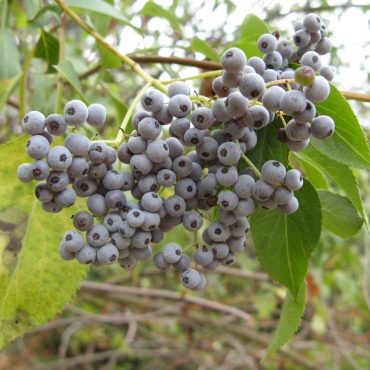
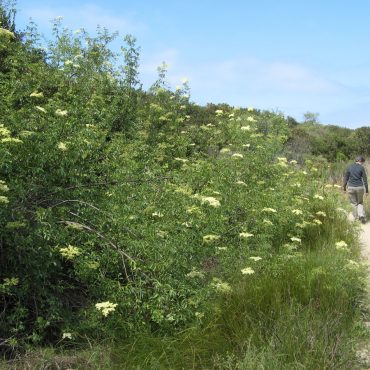
Interesting Facts
The genus name, Sambucus comes from a Greek word for a musical instrument, a “sambuke” made from elderwood.21,23,35
Elderberry supports a variety of wildlife. Song birds, such as Wrentits and Thrashers, are fond of the berries; the shrub provides nesting habitat for birds such as the Orange-crowned Warbler and Least Bell’s Vireo.5 Rabbits; ground squirrels, mice and rats eat the fruit and bark.34 Deer preferentially browse the foliage.5 The flower does not produce nectar so the numerous flower-visiting insects must be seeking pollen.59
